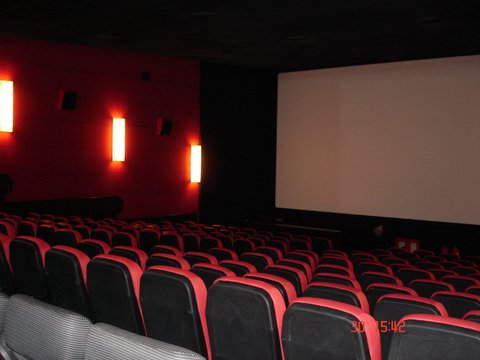
The history of film began over a hundred years ago in the 1890s with the invention of the first motion-picture cameras. Since then, film making has become a multi-million dollar industry and most movie watchers can name a few films that have made them laugh or cry. Movies have become a large part of American culture, but why is movie watching such an emotional experience?
Amy Palowski, a Today Show contributor, interviewed Dr. Jeffrey Zacks to answer this question.
Zacks is a Professor of Psychology and Director of the Dynamic Cognition Laboratory at Washington University in St. Louis. He’s recently written a book entitled Flicker: Your Brain on Movies which examines how we have such powerful reactions to films.
An abbreviated version of the interview is below. The complete interview can be found here.
Q. How are filmmakers able to push our buttons?
A. One way that we perceive emotion in film is through I process I call the Mirror Rule, which says that it’s a good idea to mimic the visual input that you’re seeing. So if you walk up to somebody and they smile at you, it’s good to smile back.
If you watch somebody in the theater and there’s a smiling face filling the screen, most of the audience is going to pop a little bit of a smile.
When we’re smiling, we tend to feel happier. When we’re frowning, we tend to feel angrier. So that combination of the Mirror Rule and the reading of emotion by the brain off the current state of the body is enough to produce emotion.
In film, a filmmaker has the opportunity to integrate those things very tightly. He can control exactly what’s shown of the face and what else is present. And the viewer has much less opportunity to walk away or focus on other things.
Q. Why do we cry at movies?
A. You’ve got this facial mirroring that causes your face to wind up in a sad pose, and that evokes a sad emotion. You’ve identified with the character and you’re reasoning about the fact that they would be sad and that produces empathetic sadness in you.
Music plays a big role in emotion and film. Often, sad movies have slow minor key music at the points that they’re trying to get you to cry.
We encounter minor key music in real life, we see people who cry and we watch bad things happen to other people—all these things make us feel sad. But in a movie, you can crank those things up to 11. You can put a big crying face that fills up your whole visual field so there’s no other place to look.
You can set up situations that are most upsetting and put three of them in a film and then you can play sad music. You put all those things together and it’s just taking the mechanisms that we encounter in real life and just really pushing all the buttons at once.
Q. Do you think it’s easier to cry at the movies?
A. I’ve had that experience myself. In real life, I’m a pretty stoic person but I’ve been at movies that were not even good movies that had me bawling like a baby. Some of the emotional stimuli that we create in movies are supernormal stimuli.
Q. Is the same true for happiness?
A. Absolutely, but in both movies and in real life, the tragic thing is it’s a lot easier to make people sad than to make people happy.
For a review of the movie The Artist and what it teaches us about nonverbal behavior, take a look at this article written by Dr. David Matsumoto.